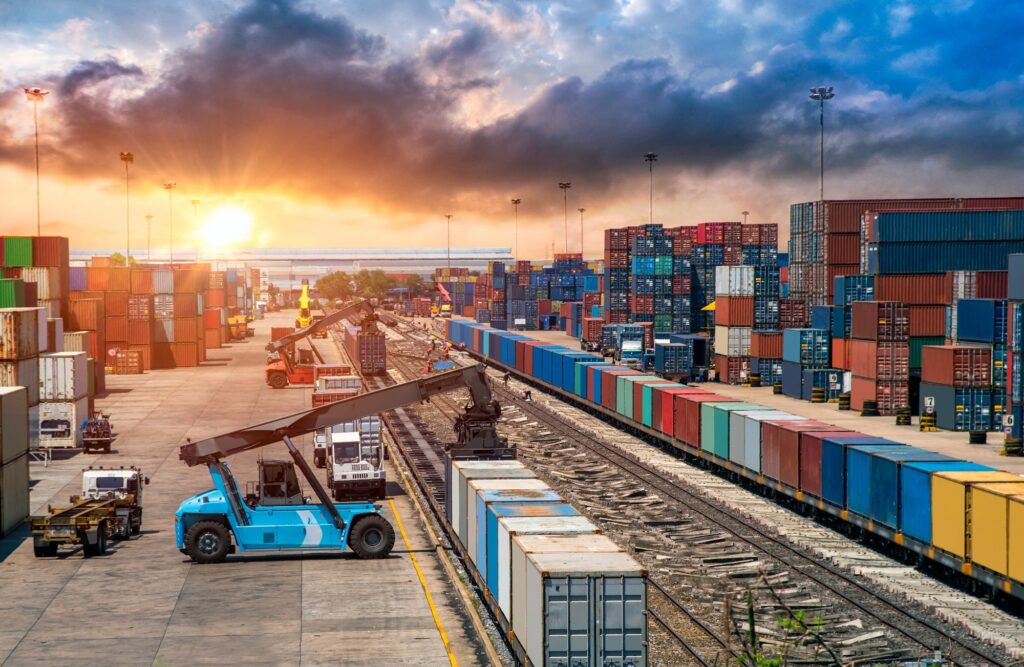
In 2021, at the height of the COVID-19 pandemic, consumers began to experience shortages of common and necessary goods. From Christmas trees and holiday gifts to computer chips and car parts to baby formula and ketchup packets, shortages and delays were reported worldwide. The pandemic had revealed – to the masses – the complexity of global supply chain logistics.
Interruptions to supply chains impacted sourcing, manufacturing and transportation of raw materials and goods to their final destinations. Those impacts led directly to empty store shelves, soaring prices, frustrated shoppers and a new understanding of the global economy.
So what happened exactly? And was the pandemic the only factor? And where do we go from here?
What is the role of supply chains?
A quick definition: The supply chain refers to the entire process of creating and selling commercial products from the sourcing of raw materials through manufacturing, shipping and sales. Each link in the chain relies on the other performing correctly, and when there is an interruption or blockage at any point, there can be delays, limited inventory and empty supermarket shelves.

What is impacting the supply chain?
There are many causes for supply chain disruptions, including but not limited to the pandemic, availability of raw materials, labor shortages, rising consumer demand, tighter health and safety protocols, the war in Ukraine, and the rise of the middle class across the globe, explains Thomas Laarz, industry sales strategy specialist at Dassault Systèmes,
“It is an entire net that connects everything,” Laarz said. “Pressure in one area has the effect in the entire supply chain leads to disruptions, delays and problems. It is an endless snowball effect.”
In the US, delays in getting goods off of ships and out of ports, particularly at the Port of Los Angeles, was one driving causes in the early months of the pandemic. The war in Ukraine is another major disruption, affecting sourcing of certain raw materials and causing a dramatic rise of energy costs, particularly in Europe.
“Prices for gas for heating, for producing goods in Germany are suddenly four times the cost on a monthly basis,” said Laarz. “Many companies were needing a lot of energy for producing electricity or goods. Everything is connected. It is a big mess.”
How is the consumer being impacted?
To understand the impacts of the breaks in the supply chain, take a look at the auto industry. New and used vehicles have been in short supply for the past few years, and consumers are being forced to wait for months for specific models.
Car production is a global affair … and everything is connected. A surge in demand for personal computers at the start of the pandemic led to a shortage of semicondutors, which caused some carmakers to cut production at some of their plants. The war in Ukraine caused shortages of certain wiring parts, catalytic converters and chips, and a fire in a Japanese factory that provided computer chips also impacted vehicle production. When demand for vehicles returned, carmakers couldn’t source enough chips to ramp up production.
The end result? Limited inventory and frustrated consumers.
Transforming logistics with digitalized value networks

The challenges to repairing supply chains are formidable. That said, those charged with maintaining supply chains are rising to the challenge. Logistical planning is getting more and more accurate, Laarz said, and companies are investing in technology solutions to track goods and keep manufacturing running smoothly.
One of the tools used by logistical planners is Dassault Systemes’s 3DEXPERIENCE platform, which allows businesses to anticipate demand, minimize disruptions and ensure continuity throughout their supply chains by identifying risk factors, creating model-based simulations and what-if scenarios and improving productivity, safety and workplace retention.
To minimize impacts from disruptions, logistics firms need to transform operations with an integrated, digitalized value network that will strengthen supply chain resiliency.
Our integrated logistics solutions allow firms to connect the dots between people, data and processes, and pair their digitalized value network with simulation capabilities of a virtual twin – an accurate virtual representation of the entire value network. With operations fully connected, the 3DEXPERIENCE platform and virtual twins allow firms to design, simulate, plan and execute logistics operations to help overcome disruptions, improve efficiency, keep employees safe and maintain profitability – even in times of disruption.
LEARN MORE about Dassault Systèmes‘ industry solution for Integrated Logistics.

